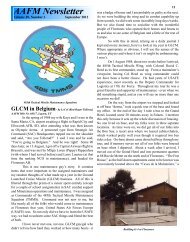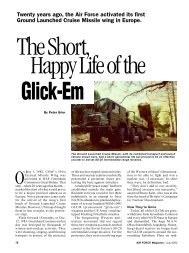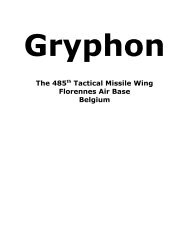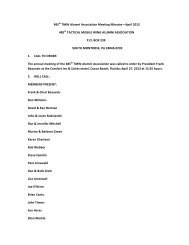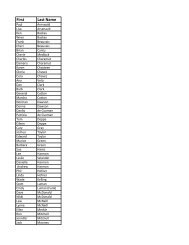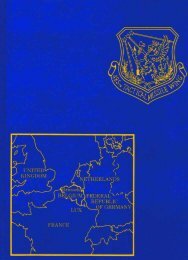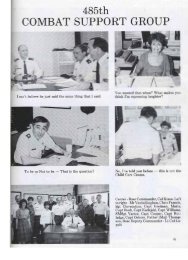You also want an ePaper? Increase the reach of your titles
YUMPU automatically turns print PDFs into web optimized ePapers that Google loves.
INTRODUCTION<br />
On 9 August 1988, months of hard work and preparation achieved fruition<br />
with the arrival of a ten-man Soviet baseline inspection team at<br />
Florennes Air Base. The team arrived as part of the verification process<br />
spelled out in the historic Interrnediate-Range and Shorter-Range Missile<br />
Elimination Treaty. Siurultaneous to the Florennes inspection, a second<br />
ten-member Soviet team inspected the European Missi.le Repair Facility,<br />
located dt Gosselies, Belgium, the site of advance repairs for NATOts<br />
cruise and Pershing missile inventory. These two teams, composed of<br />
Soviet military and technical experts, arrived with a predetermined agenda<br />
which would verify to Soviet satisfaction strict adherance to the treaty.<br />
Accompanying the Soviets was a contingent of the American On-Site Inspectj-on<br />
Agency (OSIA), acting both as liaison between the Soviets and the<br />
inspected parties and as representatives of the United States t interests<br />
during the inspection.<br />
How well the i-nspections went, and the efforts put forth by the men<br />
and women of Florennes to smooth the course of this moment in history,<br />
were the the topics of this brief recap. Wing leve1 hi-storians seldom<br />
have the opportunity to eover what can truly be called rfreal hj.storyrr,<br />
for the need to record the day-to-day routine of aircraft or missile<br />
operations is all too often an exercise in important, but dull, contlnuity.<br />
The inspection of onefs base by a Soviet team as part of an effort to<br />
remove an enti.re class of nuclear weapons from the worldfs collective<br />
arsenal, now that is REAL HISTORY, and as such merits coverage from al1<br />
l-eveLs of the historical conrmunity. This sma1l effort, and other such<br />
projeets from the wing historianrs corps, provides a view from the ground<br />
level. As such it probably does not adequately frame the "big picturerr.<br />
This will be the work of those l-ooking in from on-high, using the efforts<br />
of 1ocal historians as sources of information and background coloring.<br />
Much credit goes to the entire Florennes base community, for the inspec-'<br />
tion of 9 - 10 August was an overwhelming success, both in terms of treaty.<br />
adherance ains as well- as in the establishment of closer ties between two<br />
diverse peoples. The treaty verification process, essential to any hopes<br />
for a world eventually free of the threat of nuclear war, continued to<br />
go well. According to Mr. Lyebedev, the Soviet Team Leader, rVe note that<br />
the inspected party strictly adhered to the provisions of the treaty.tt<br />
As to the growth of ties between Soviet and Arnerican people that these<br />
inspections continue to nurture, Mr. Lyebedev culminated his closing<br />
remarks to the base populace with the observation that, "...we are pleased<br />
with the grow"Lh of mutual understanding and trust between the parties<br />
concerned.tt This growth of understanding between the superpowers, and the<br />
resulting effect.s on the security of Europe, these will form the lionrs<br />
share of later coverage of the treaty now being enacted. For now, a<br />
brief look at the role of one small, but important, group of people in<br />
this process is in order.<br />
It is to these people, the men and women of the <strong>485th</strong> Tactical Missile<br />
Wing, that this short work is dedicated.



